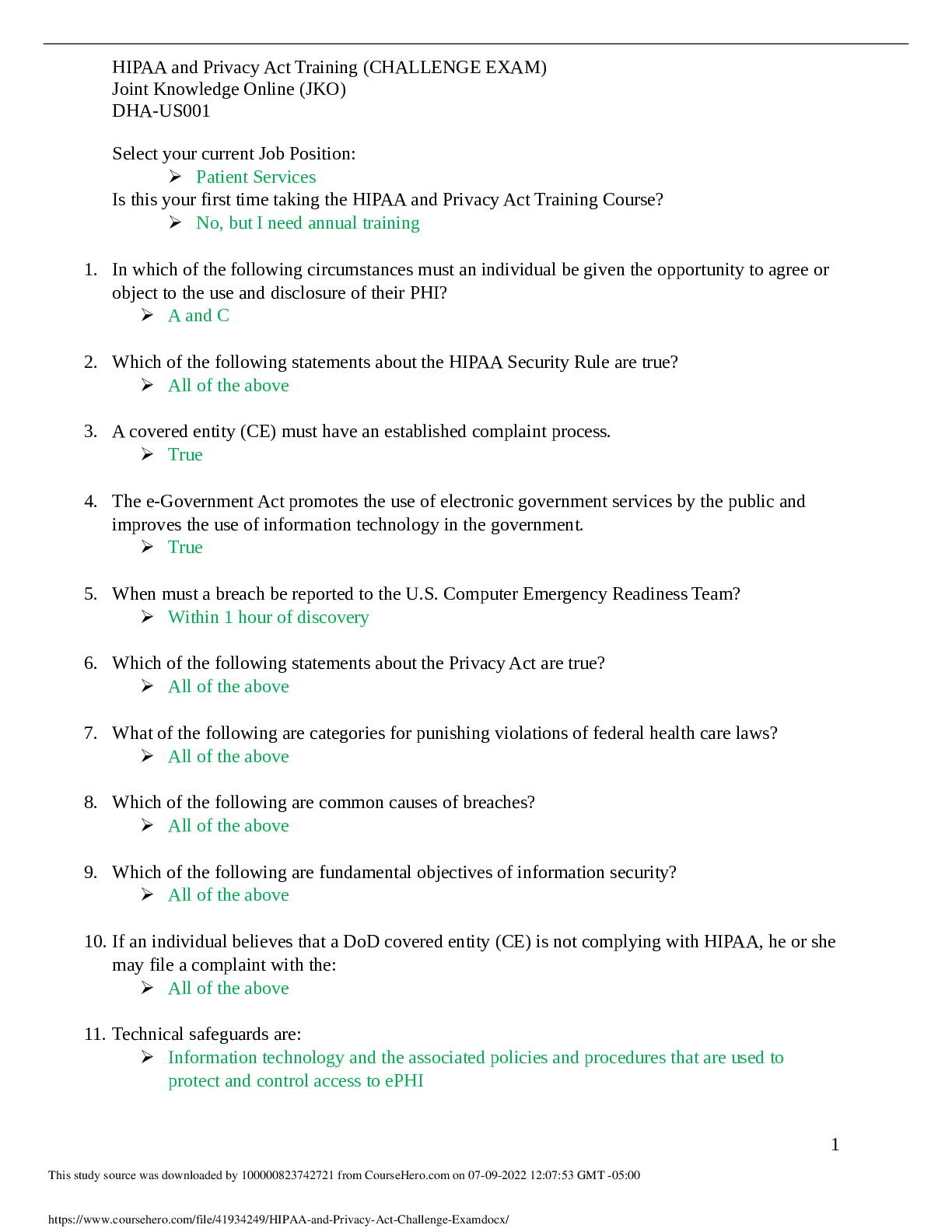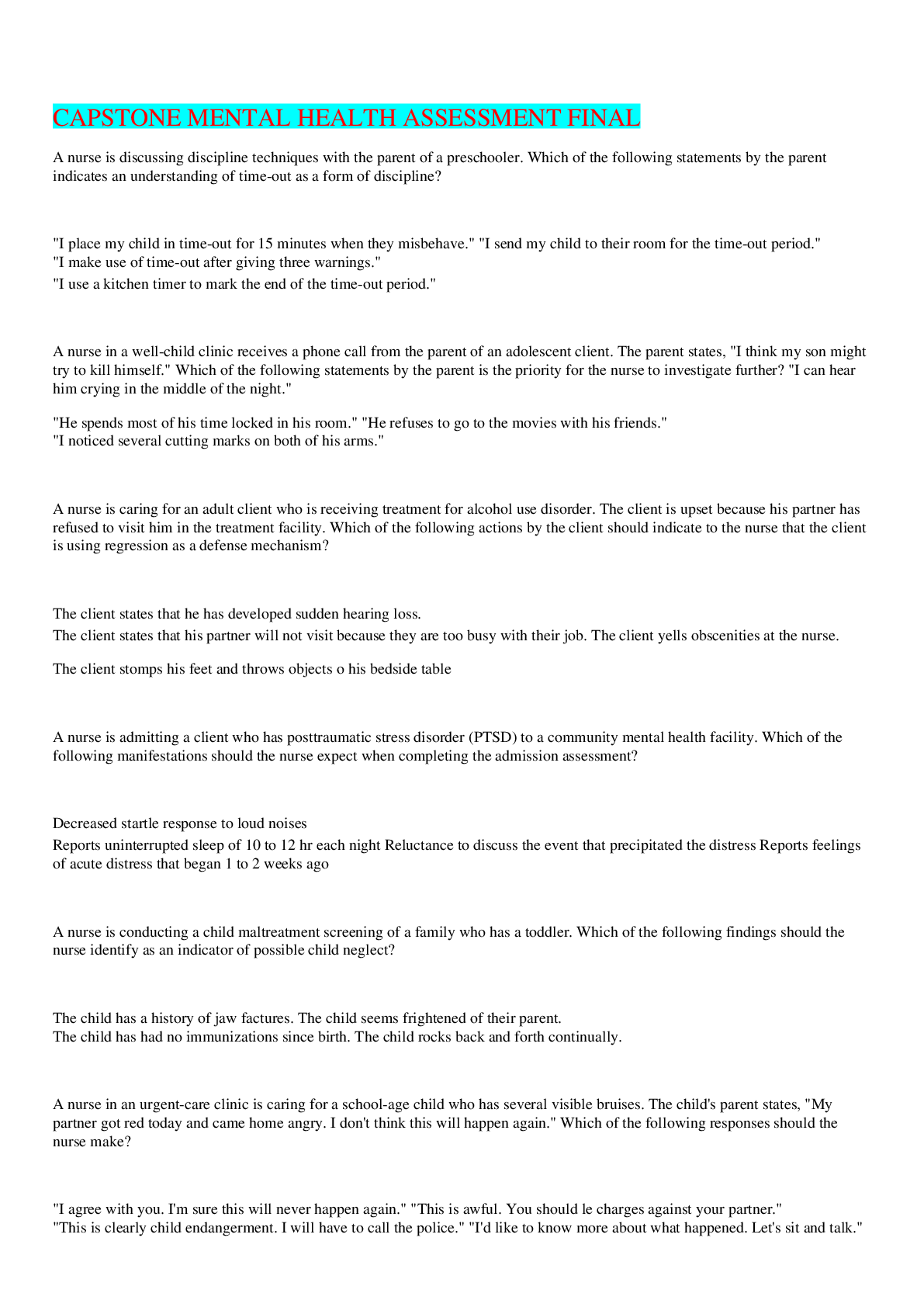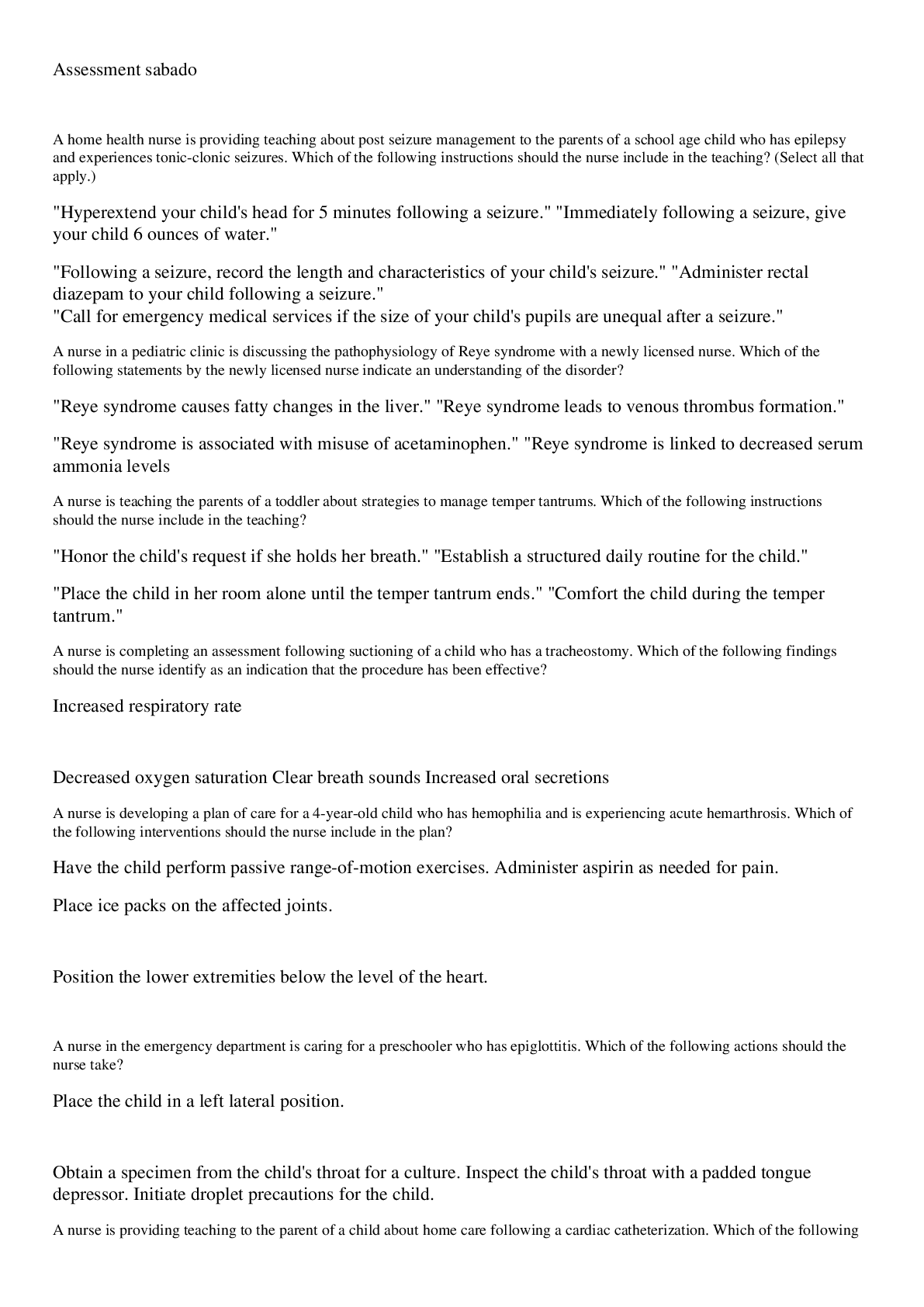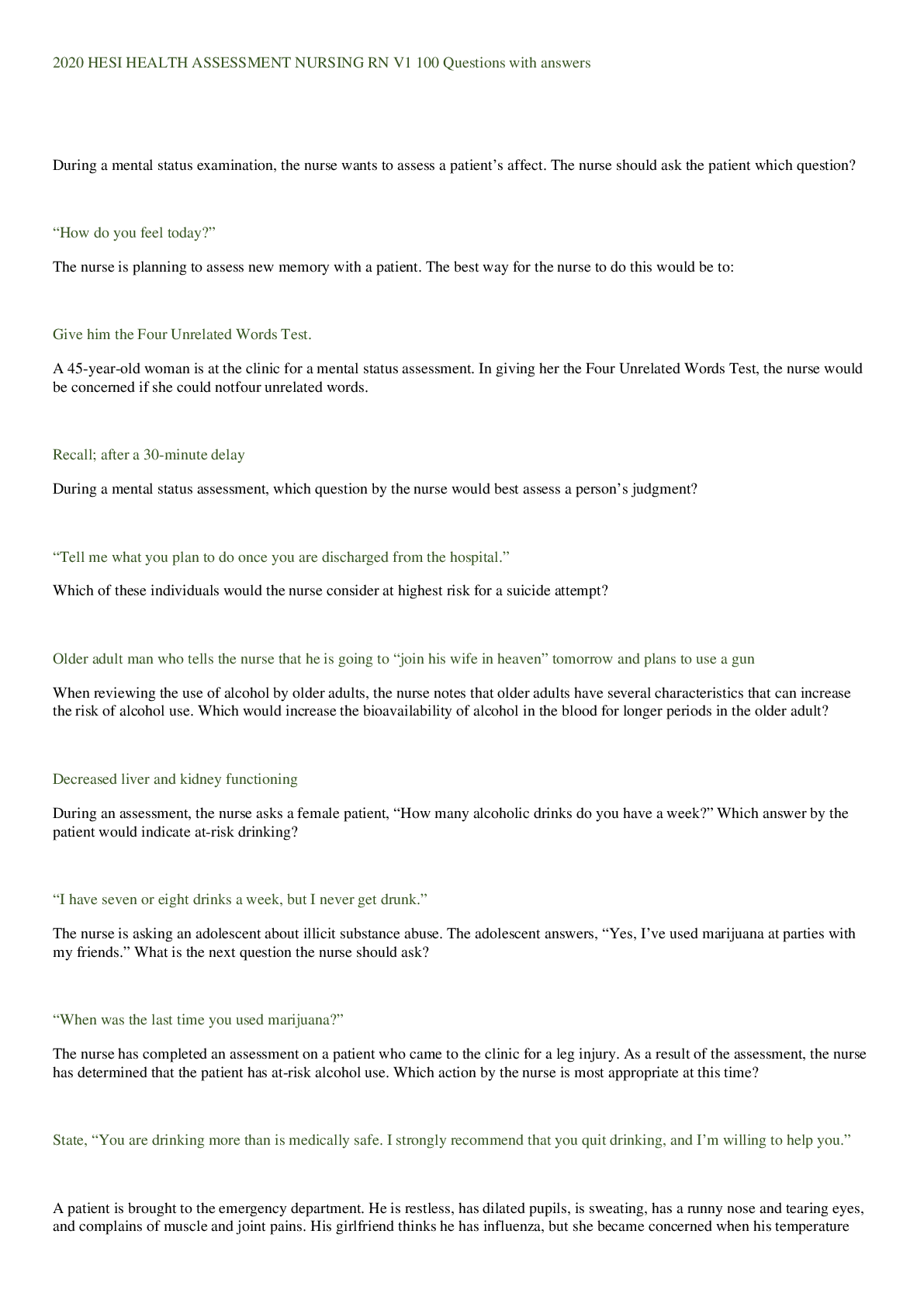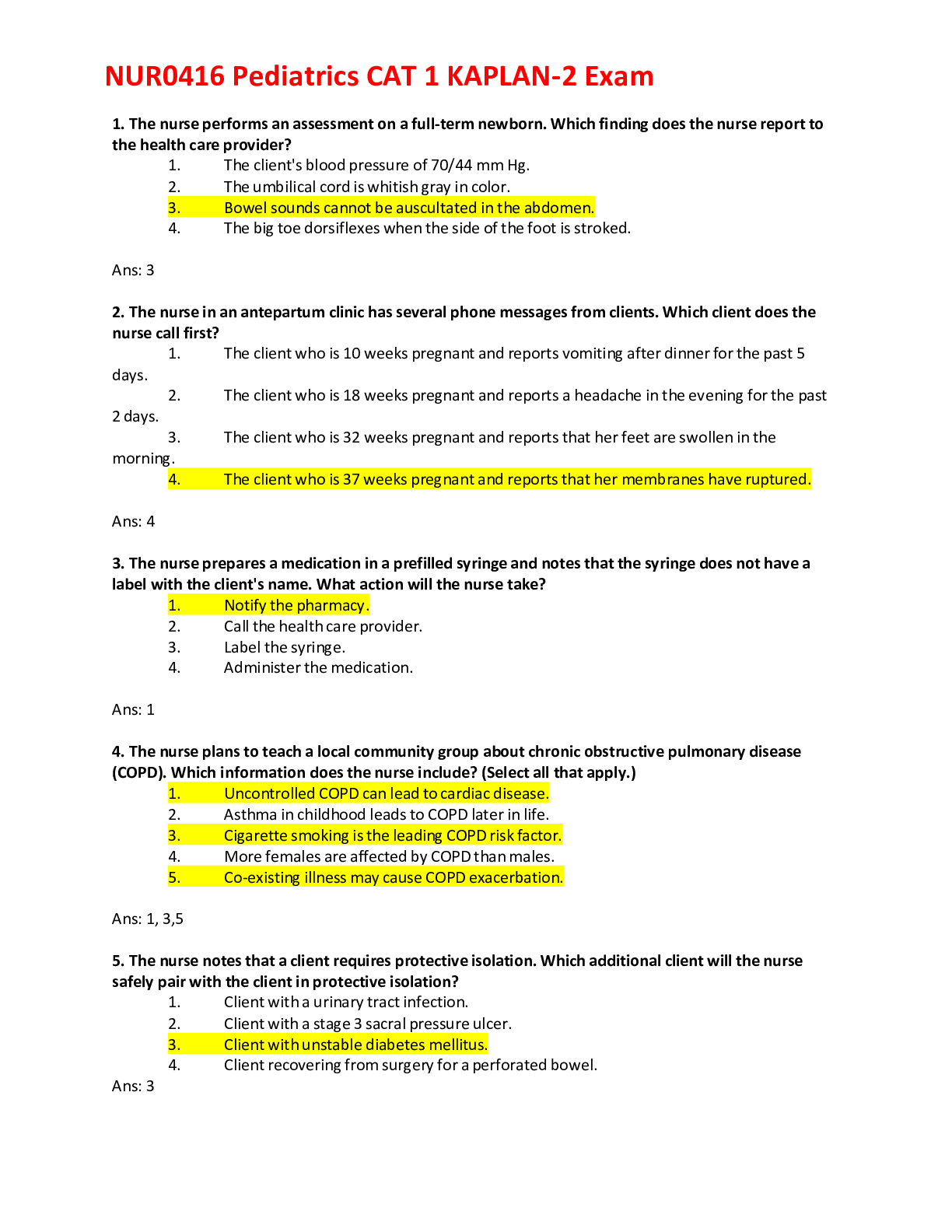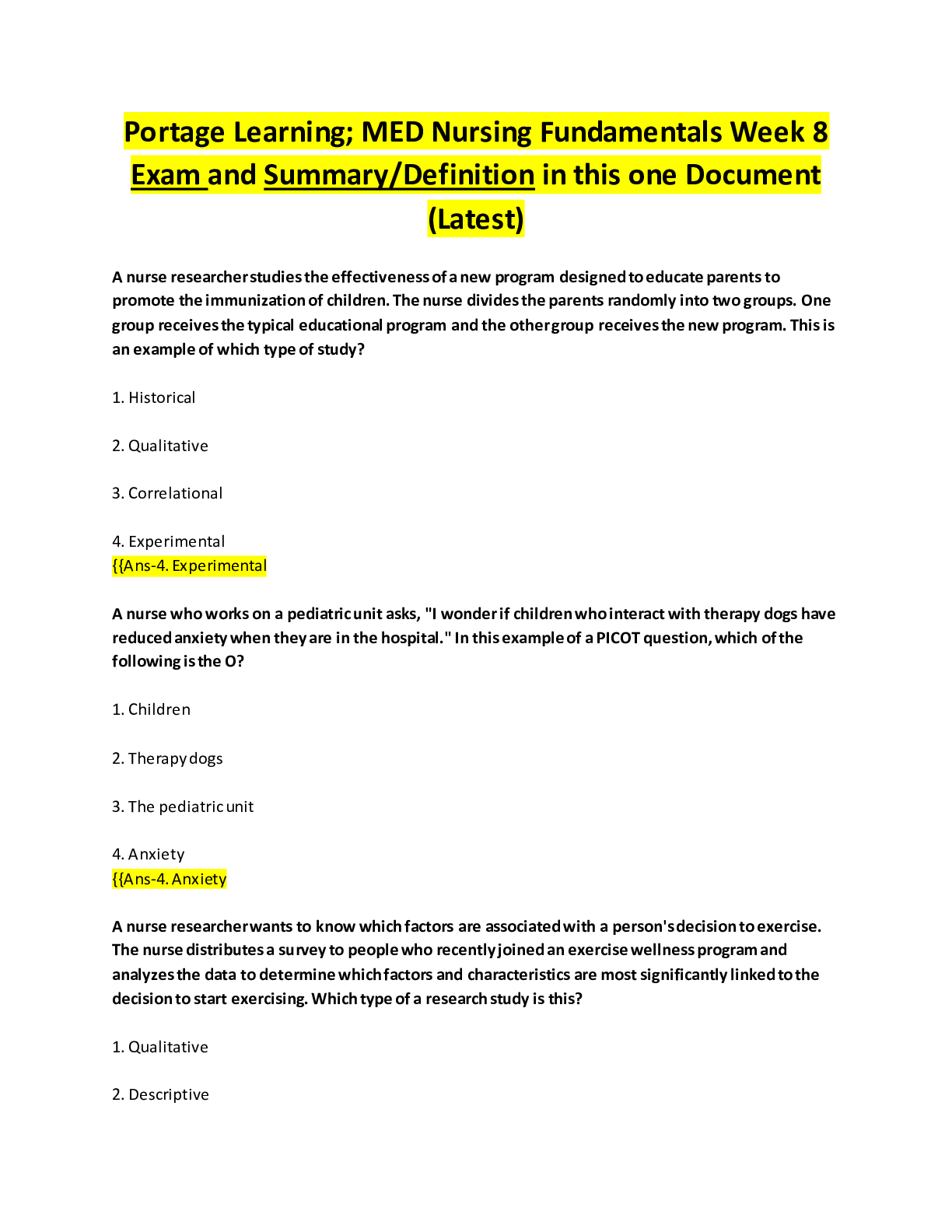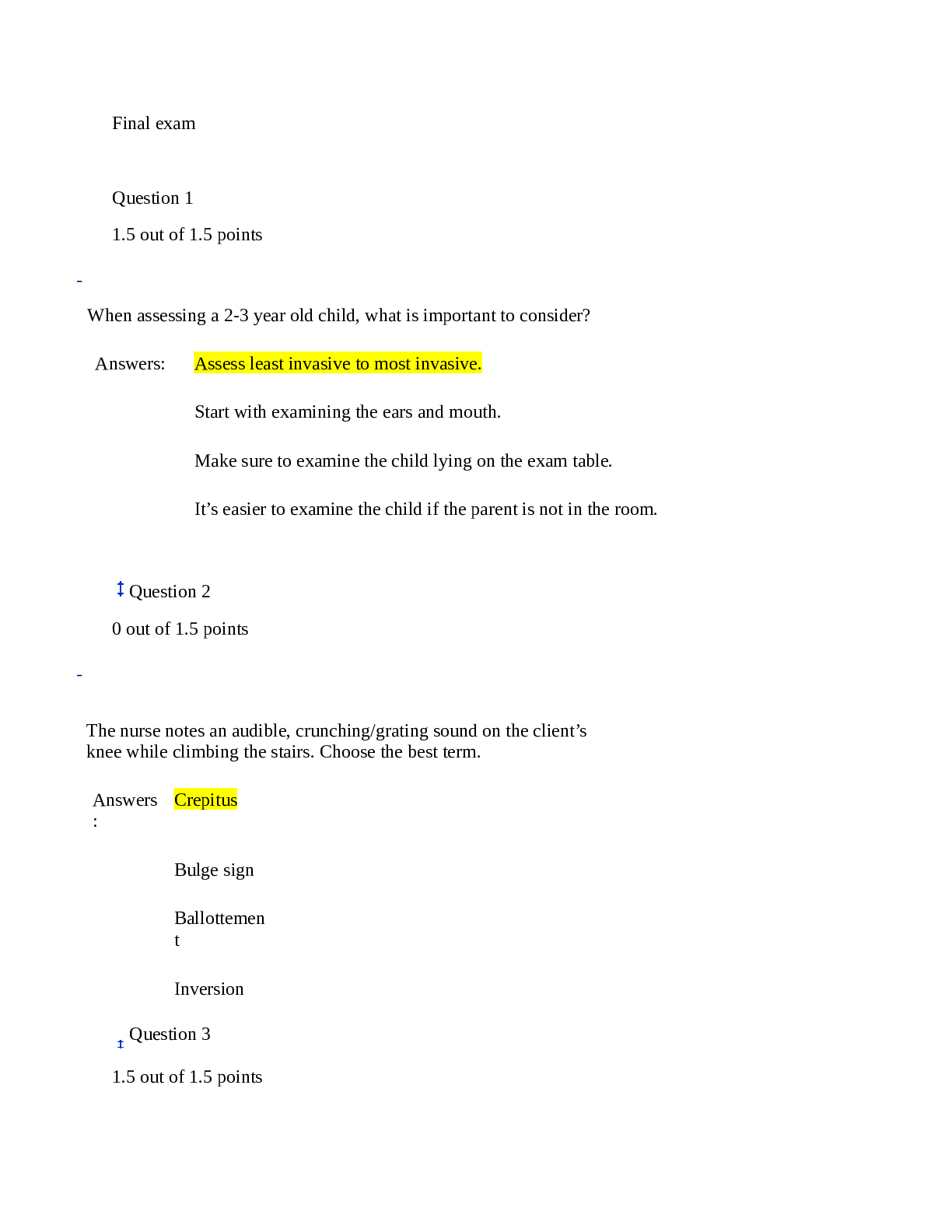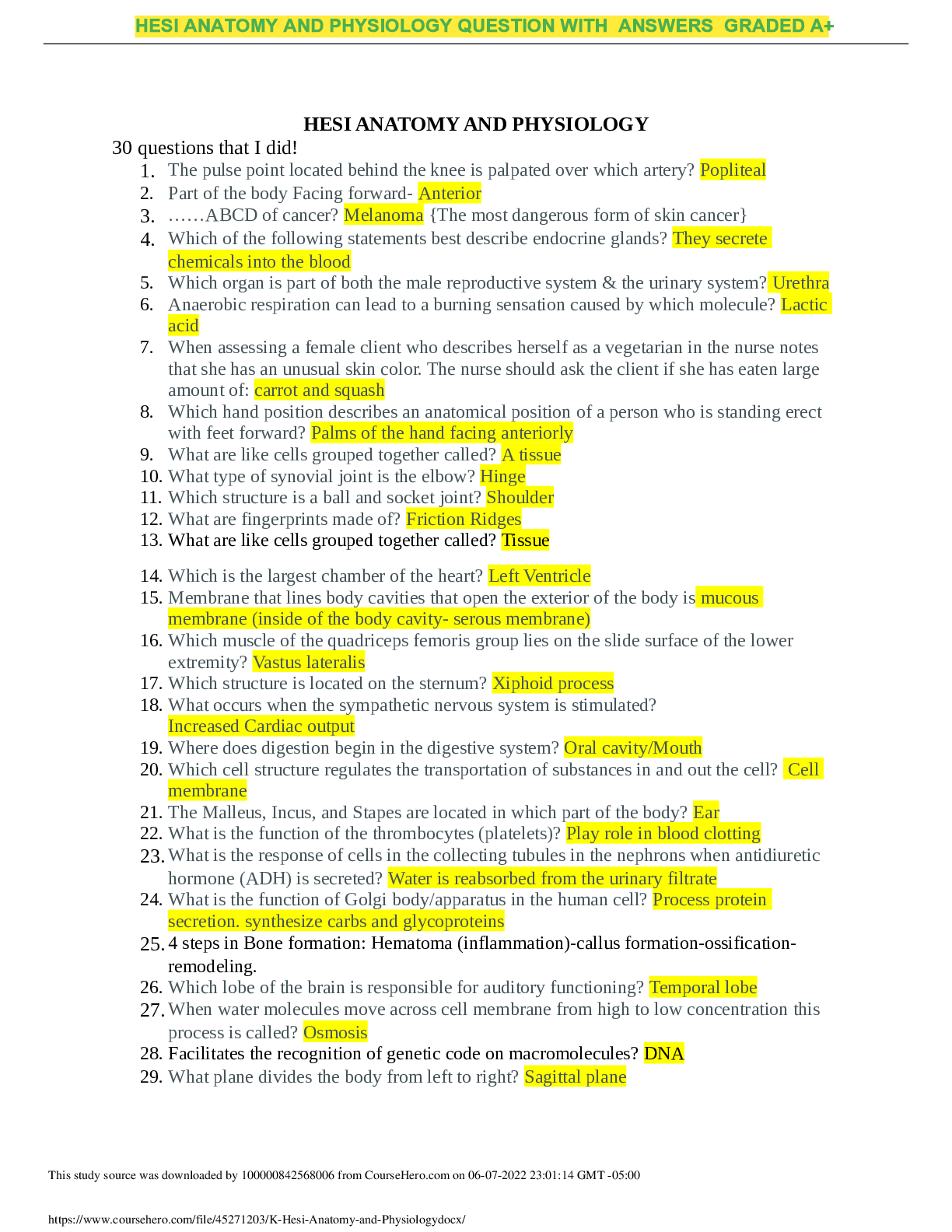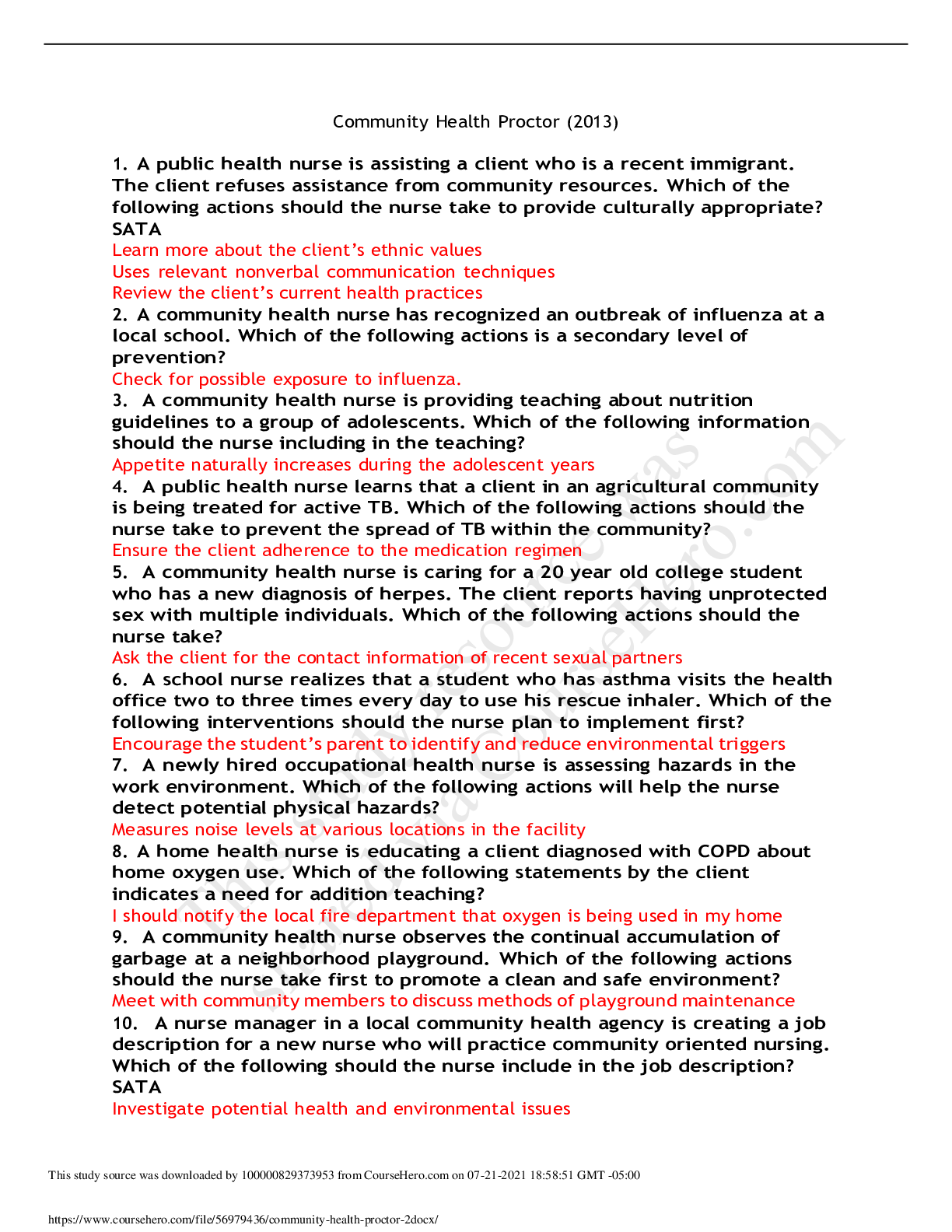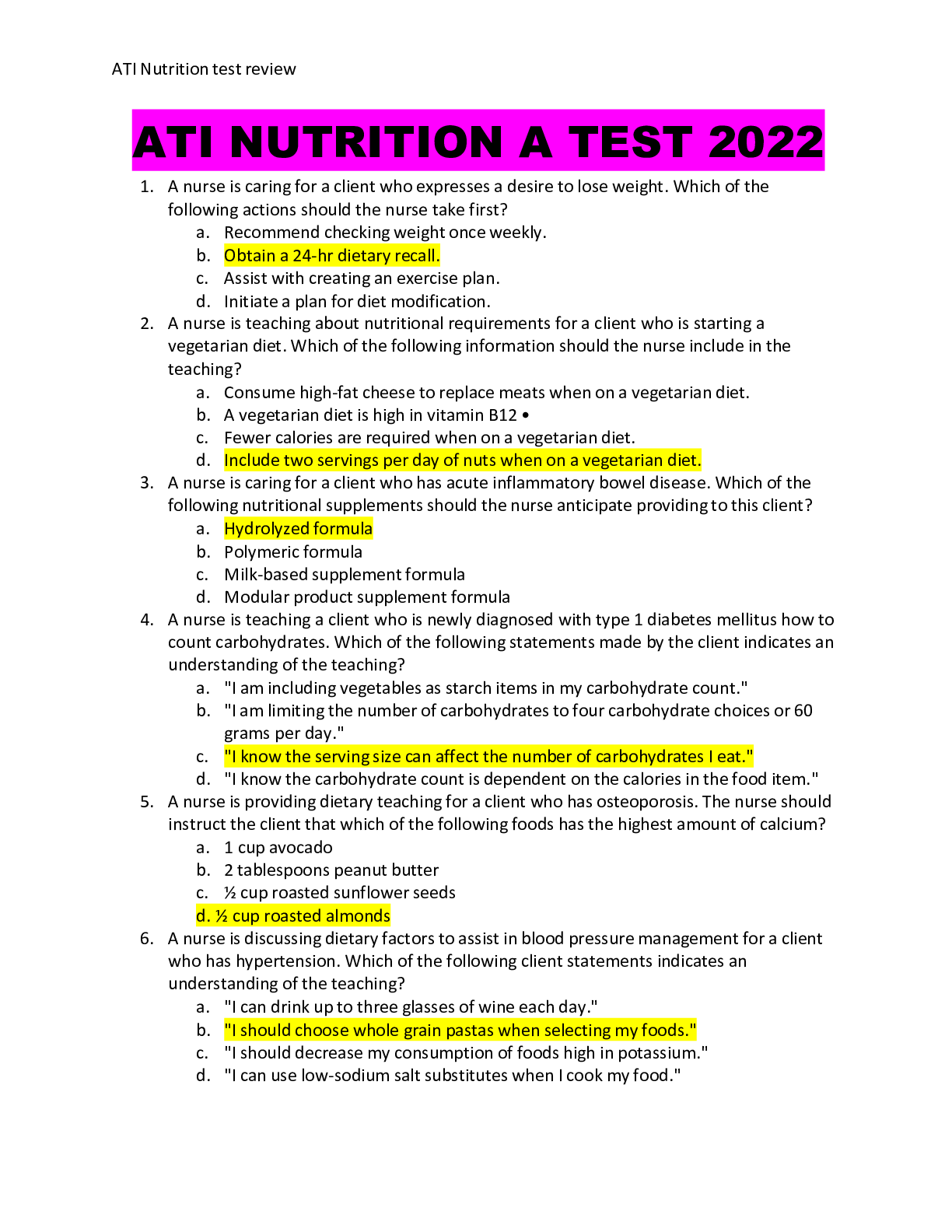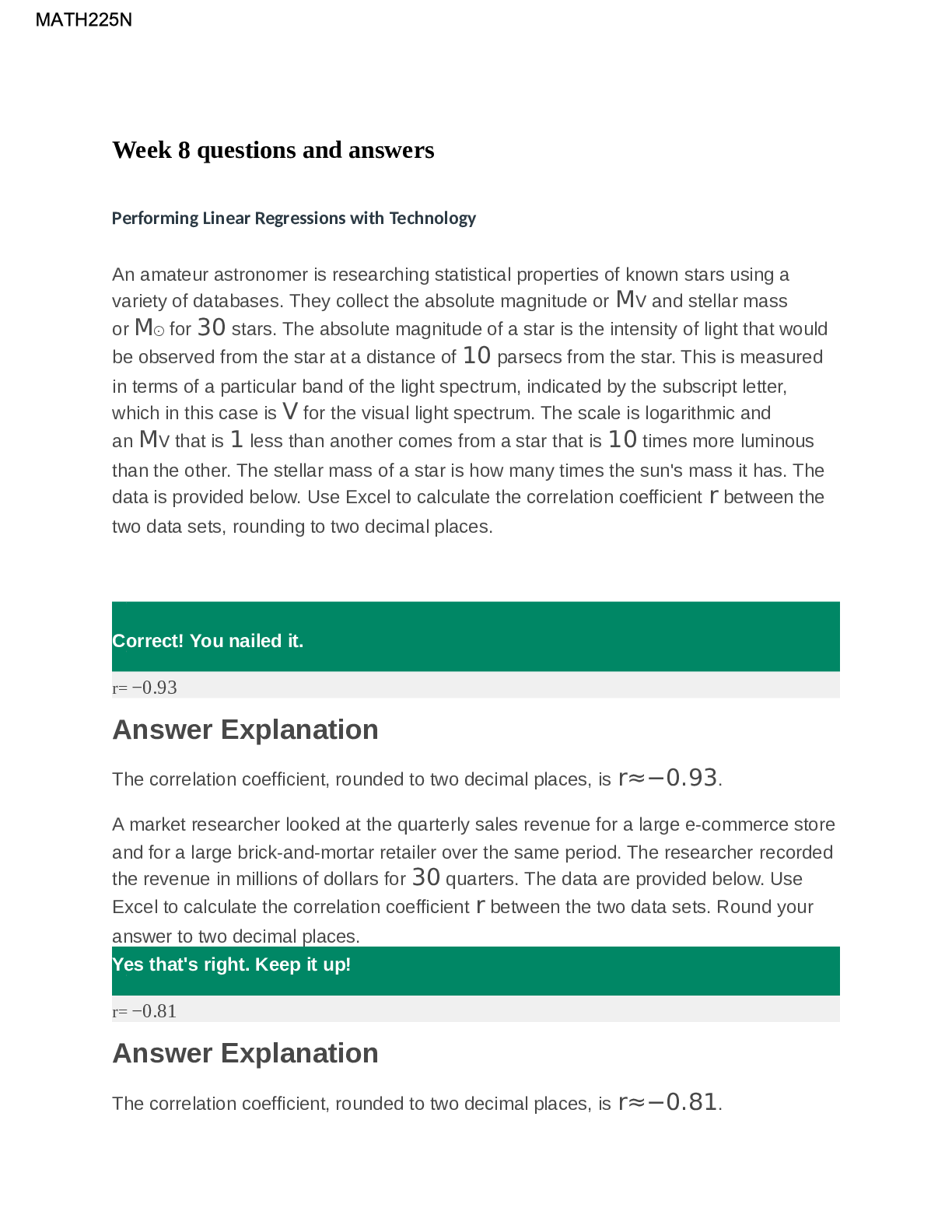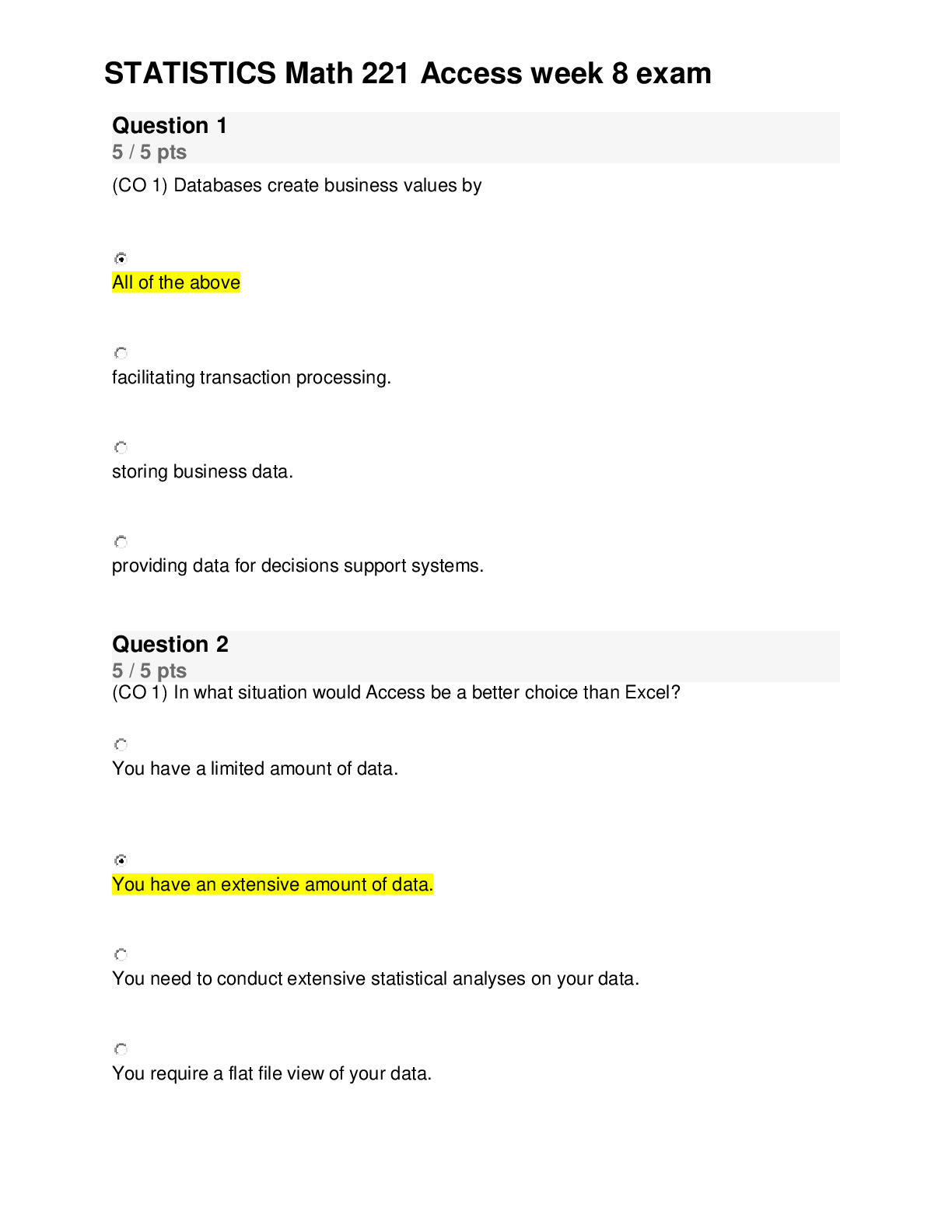NR 511 Week 8 Exam With Answers Graded A
Document Content and Description Below
NR 511 Week 8 Exam Question 1. The most cost-effective screening test for determining HIV status is which of the following? Student Answer: Western blot Enzyme-linked immunosorbent assay Venereal... Disease Research Laboratory test Viral load Points Received: 0 of 2 Comments: Question 2.Question : Which blood test is a nonspecific method and most helpful for evaluating the severity and course of an inflammatory process? Student Answer: Erythrocyte sedimentation rate White blood cell count Polymorphonuclear cells C-reactive protein (CRP)Points Received: 0 of 2 Comments: Question 3.Question : Cocaine acts as a stimulant by blocking the reuptake of which neurotransmitter? Student Answer: GABA Acetylcholine Dopamine Serotonin Points Received: 0 of 2 Comments: Question 4.Question : Mrs. Thomas was seen in the office complaining of pain and point tenderness in the area of her elbow. The pain has increased following a day of gardening one week ago. A physical finding that differentiates the diagnosis and is most consistent with lateral epicondylitis (tennis elbow) is: Student Answer: Ecchymosis, edema, and erythema over the lateral epicondyle Pain at the elbow with resisted movements at the wrist and forearm Inability to supinate and pronate the arm Inability to flex or extend the elbow against resistance Points Received: 2 of 2 Comments: Question 5.Question : Which of the following statements concerning the musculoskeletal examination is true? Student Answer: The uninvolved side should be examined initially and then compared to the involved side. The part of the body that is causing the patient pain should be examined first. When possible, the patient should not be asked to perform active range-of-motion (ROM) exercises to avoid causing pain. Radiographs should always be obtained prior to examination so as not to cause further injury to the patient. Points Received: (not graded) Comments:Question 6.Question : Which of the following signs or symptoms indicate aninflammatory etiology to musculoskeletal pain? Student Answer: Decreased C-reactive protein Hyperalbuminemia Morning stiffness Weight gain Points Received: (not graded) Comments: Question 7.Question : Which causes the greatest percentage of mammalian bites? Student Answer: Dogs Cats Humans Rodents Points Received: (not graded) Comments: Question 8.Question : A 48-year-old woman is seen in the clinic with complaints of prolonged heavy menstrual periods. She is pale and states she can no longer exercise. Pelvic exam reveals a single, very large mass. Which of the following diagnostic tests should the clinician order first? Student Answer: Transvaginal ultrasound Endometrial biopsy MRI Abdominal computed tomography scan Points Received: (not graded) Comments: Question 9.Question : A diabetic patient asks the clinician why he needs to check his blood sugar at home even when he feels good. Which of the following responses would be most appropriate? Student Answer: "Control of glucose will help postpone or delay complications." "Regularly checking blood sugar will help establish a routine." "Monitoring glucose will promote a sense of control." All of the above Points Received: (not graded)Comments: Question 10.Question : A 25-year-old patient presents to the clinic with fatigue, coldintolerance, weight gain, and constipation for the past 3 months. On physical examination, the clinician notices a sinus bradycardia; muscular stiffness; coarse, dry hair; and a delay in relaxation in deep tendon reflexes. Which of the following tests should be ordered next? Student Answer: Serum calcium TSH Electrolytes Urine specific gravity Points Received: (not graded) Comments: Question 11.Question : Which of the following medications for type 2 diabetes mellitus should not be prescribed during pregnancy? Student Answer: Insulin Metformin Glucotrol Precose Points Received: (not graded) Comments: Question 12.Question : During a DRE on a 75-year-old man, the clinician suspects the patient has prostate cancer. What physical finding should make the clinician suspicious? Student Answer: An enlarged rubbery gland A hard irregular gland A tender gland A boggy gland Points Received: (not graded) Comments: Question 13.Question : Eddie, age 4, presents to the ED with a live insect trapped in his ear canal causing a lot of distress. What should be your first step? Student Answer: Remove the insect with tweezers. Immobilize the insect with 2% lidocaine. Sedate Eddie with diazepam. Shine a light in the ear for the insect to "find its way out." Points Received: (not graded) Comments:Question 14.Question : What is the most common cause of microcytic anemia? Student Answer: Anemia of chronic disease Sideroblastic anemia Iron-deficiency anemia Thalassemia Points Received: (not graded) Comments: Question 15.Question : An 82-year-old man is seen in the primary care office with complaints of dribbling urine and difficulty starting his stream. Which of the following should be included in the list of differential diagnoses? Student Answer: Benign prostatic hyperplasia (BPH) Parkinson's disease Prostate cancer All of the above Points Received: (not graded) Comments: Question 16.Question : Early rheumatoid disease is characterized by: Student Answer: Pain and swelling in both small and large peripheral joints Rigid joints with diminished range of motion Joint swelling and immobility on rising A cardiac rub or pulmonary friction rub Points Received: (not graded) Comments: Question 17.Question : A 70-year-old female has fallen 2 weeks ago and developed immediate pain in her left wrist. She thought she just bruised it but is worried because it has not improved. She has used Tylenol® and ice at home, and that has helped slightly. You examine her and find she has moderate swelling and ecchymosis but no overtly obvious deformity. Her ROM is uncomfortable and severely diminished due to the pain. No crepitus is heard or felt. Her fingers are warm; her pulse is strong; and capillary refill is less than 2 seconds. What should you do? Student Answer: Make an immediate referral for an orthopedic evaluation without further assessment. Tell her that it takes time for these bruises to improve, so she should be patient.Obtain a wrist x-ray and place her wrist in a splint or [Show More]
Last updated: 1 year ago
Preview 1 out of 53 pages

Reviews( 0 )
Document information
Connected school, study & course
About the document
Uploaded On
Jun 19, 2022
Number of pages
53
Written in
Additional information
This document has been written for:
Uploaded
Jun 19, 2022
Downloads
0
Views
234

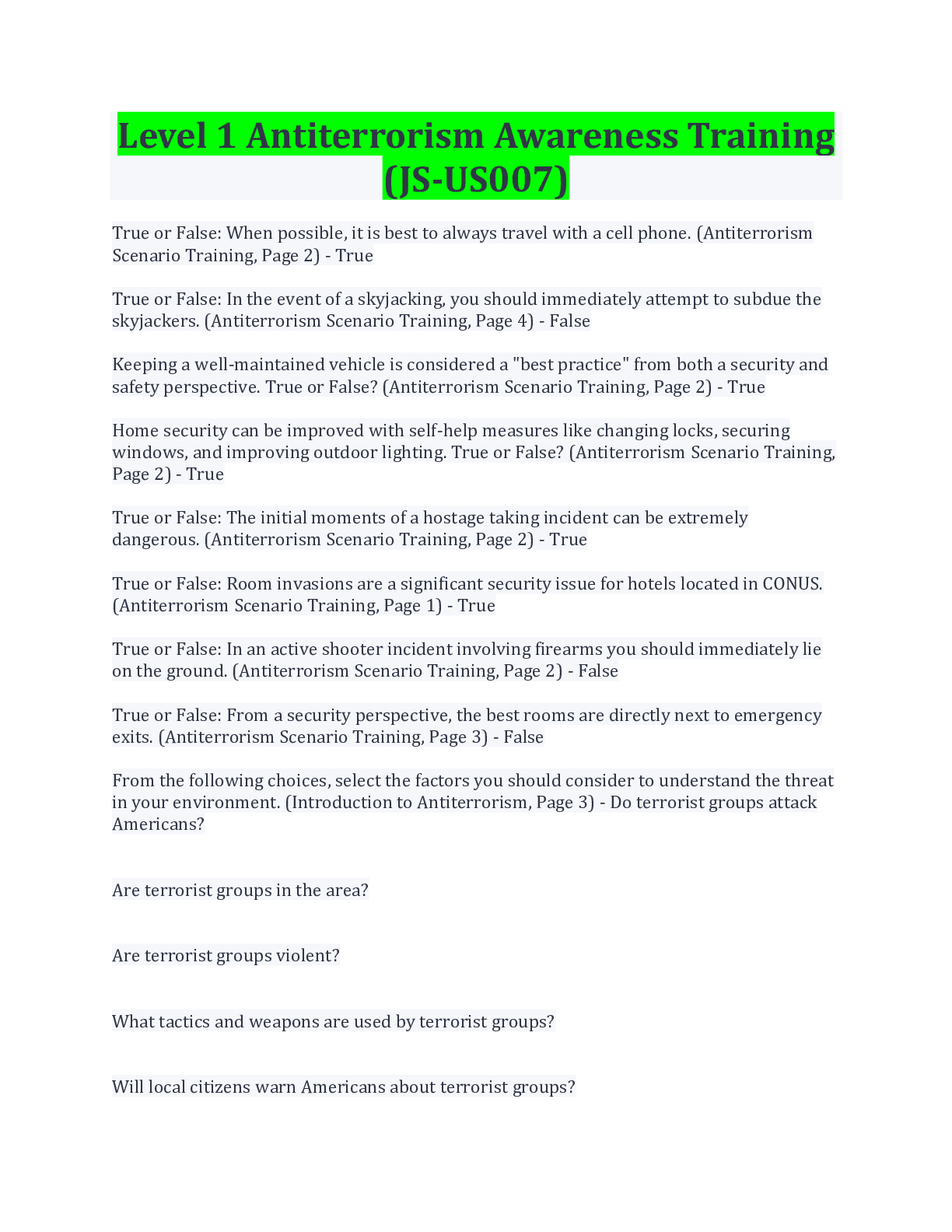
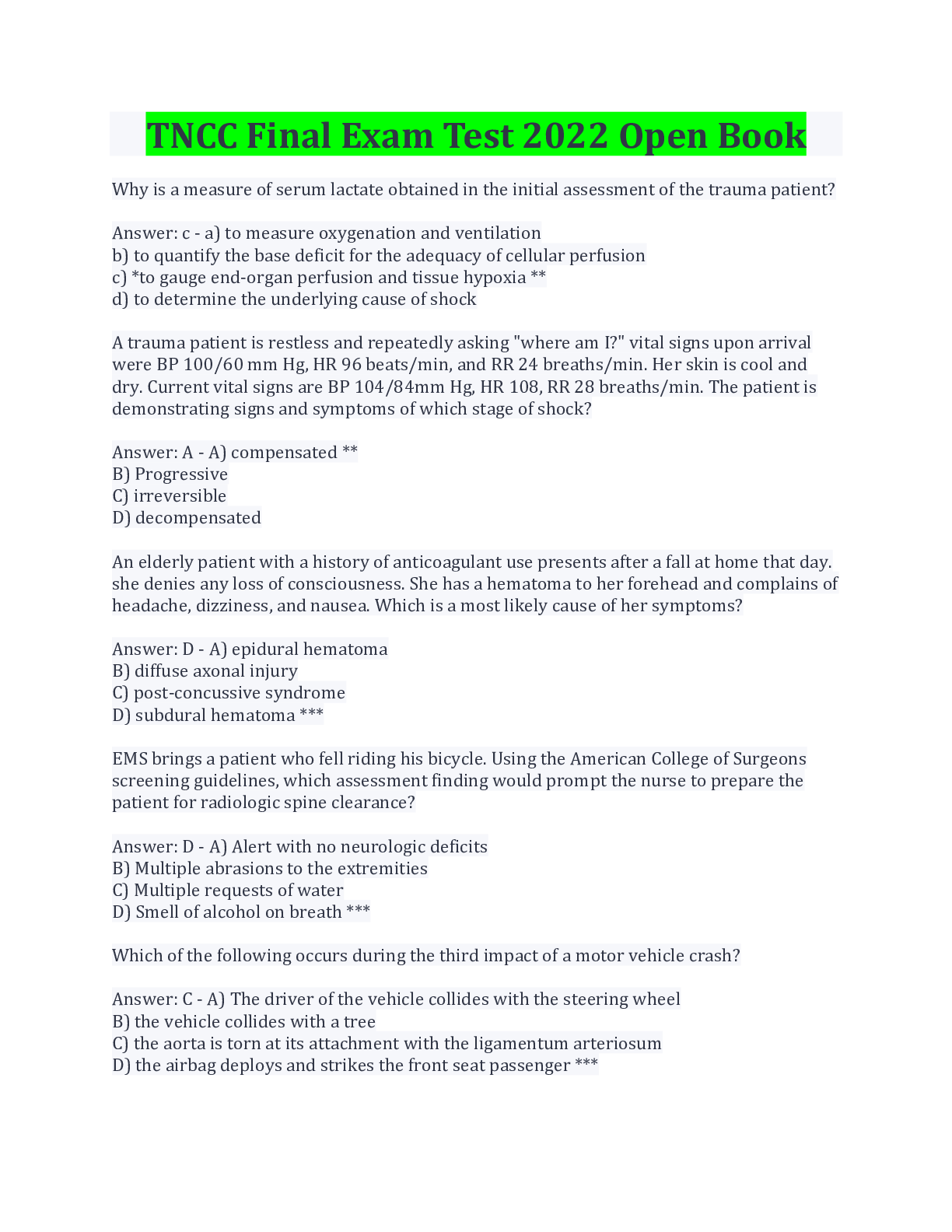

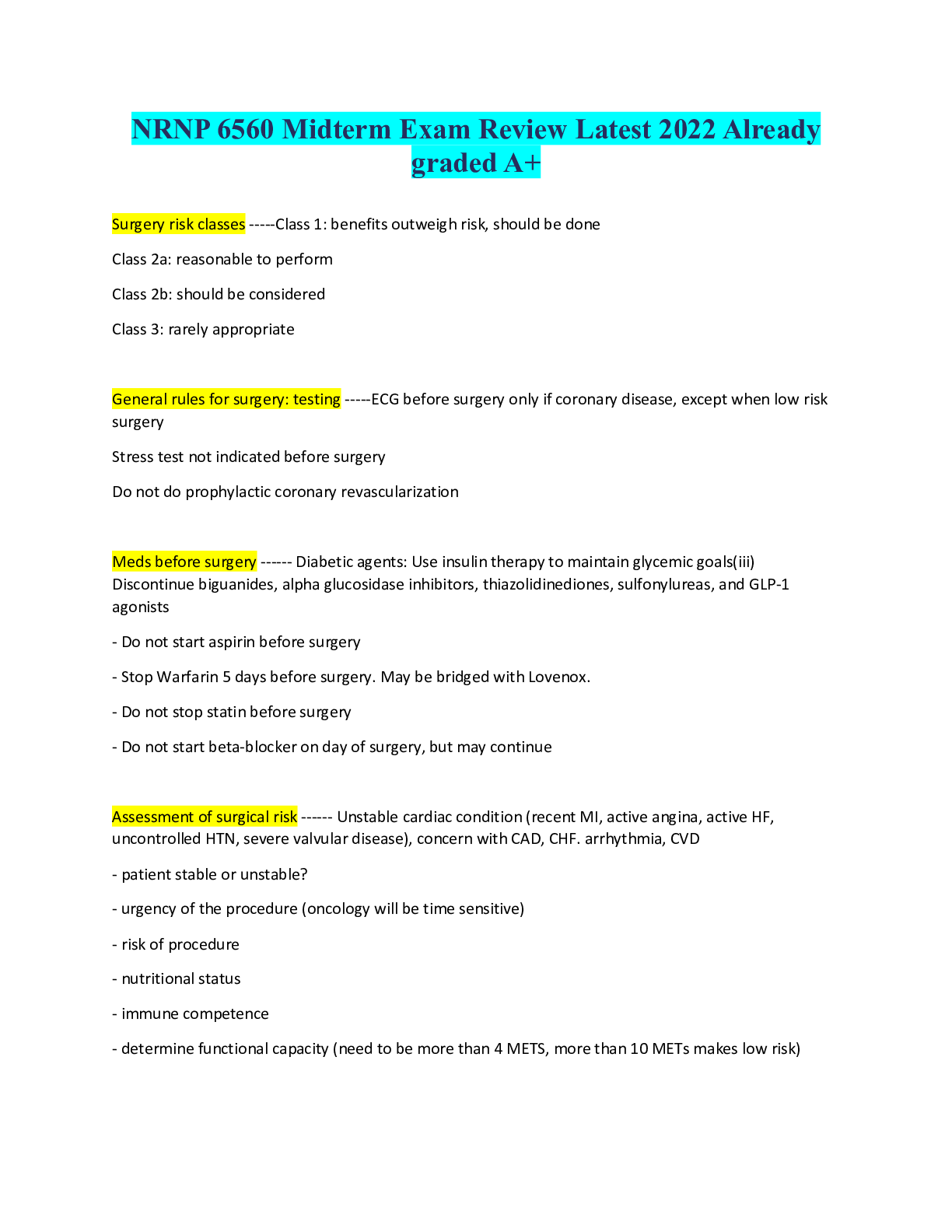
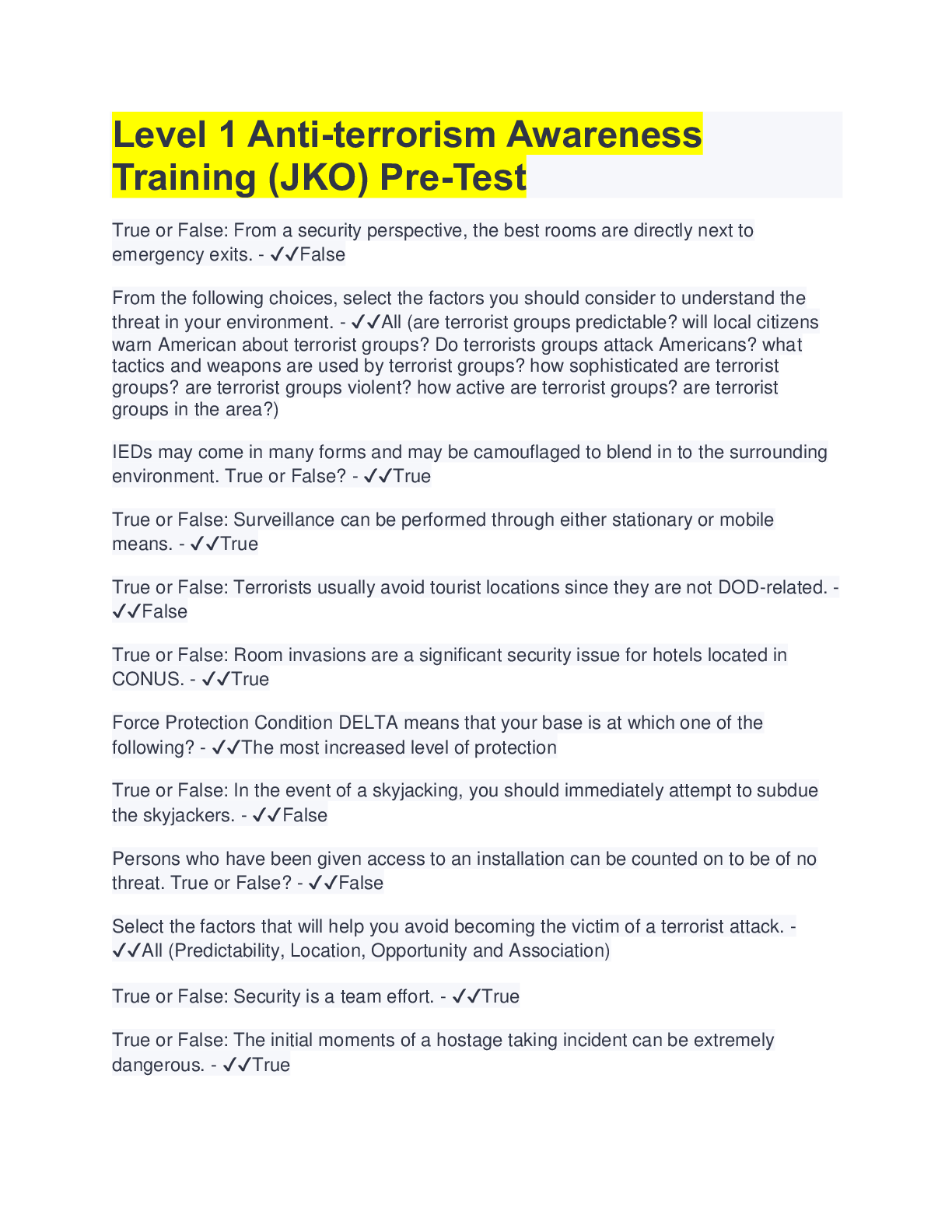
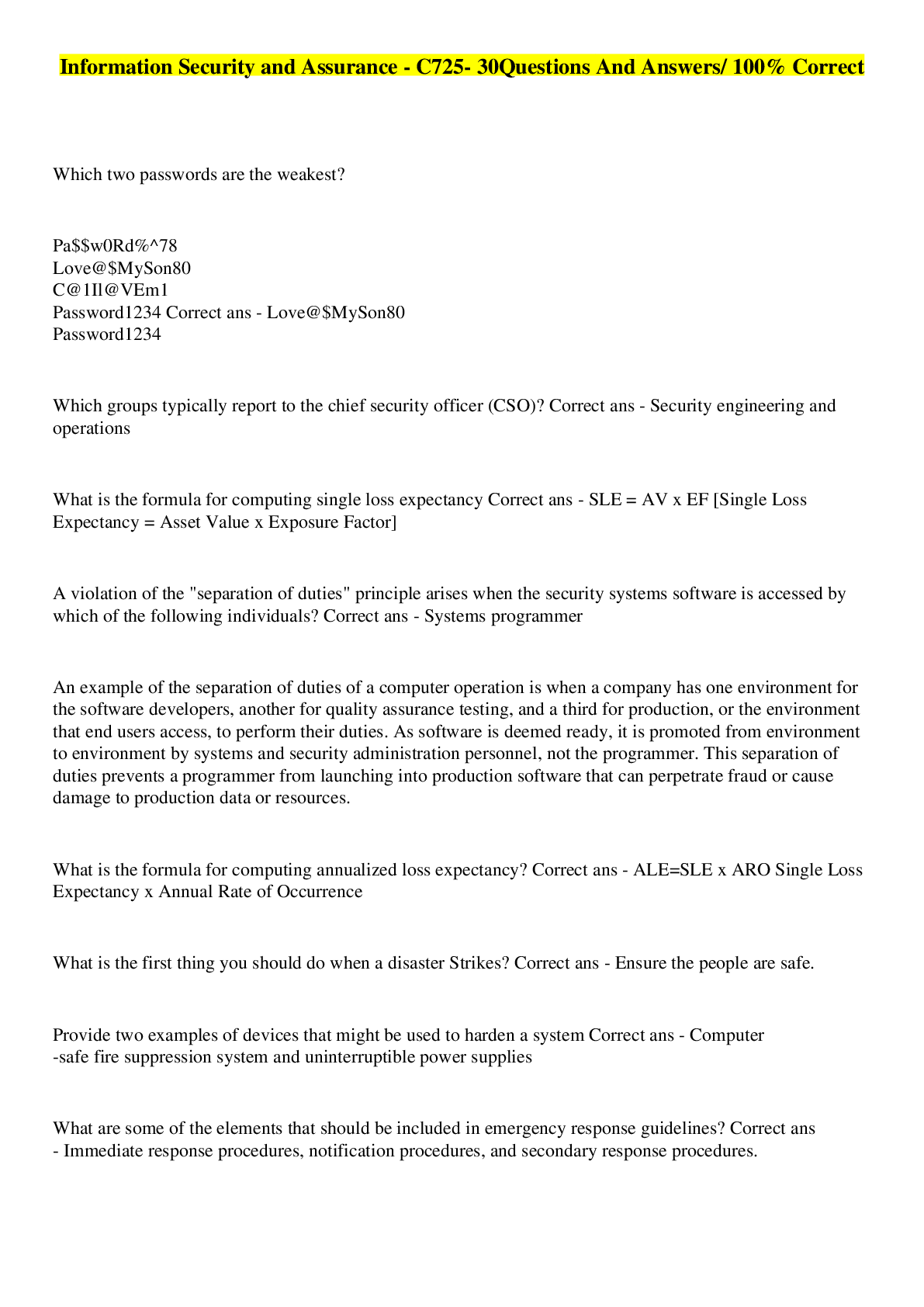
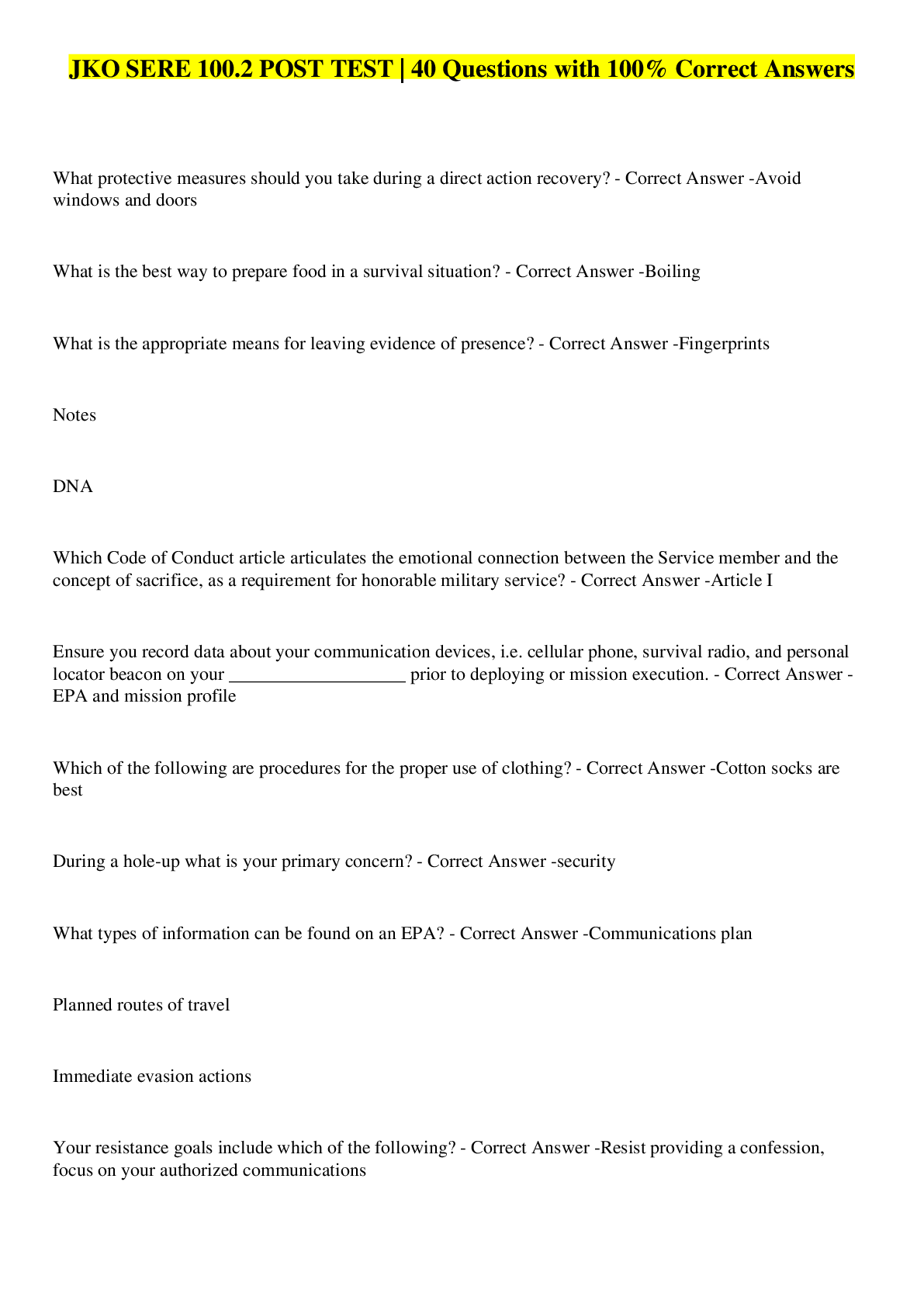
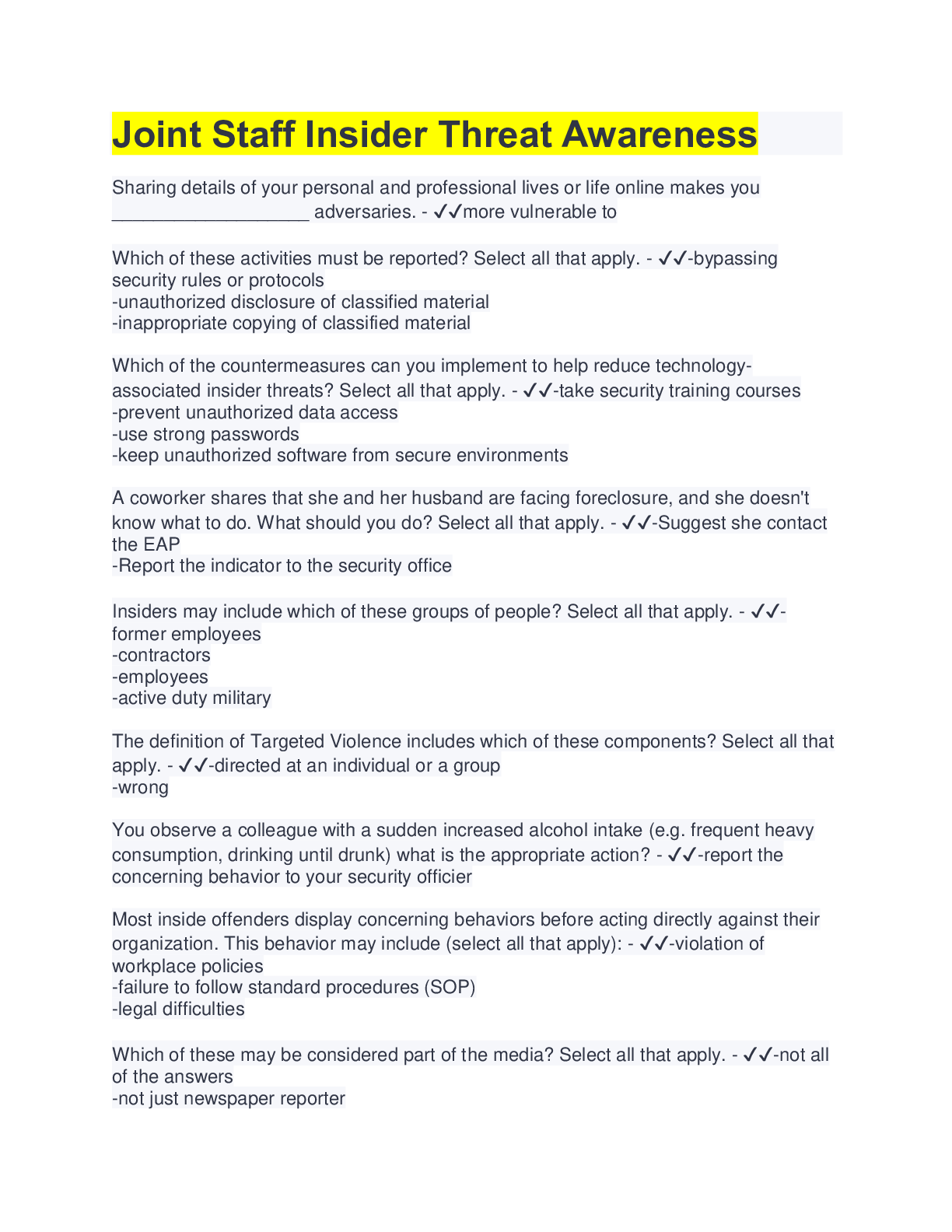


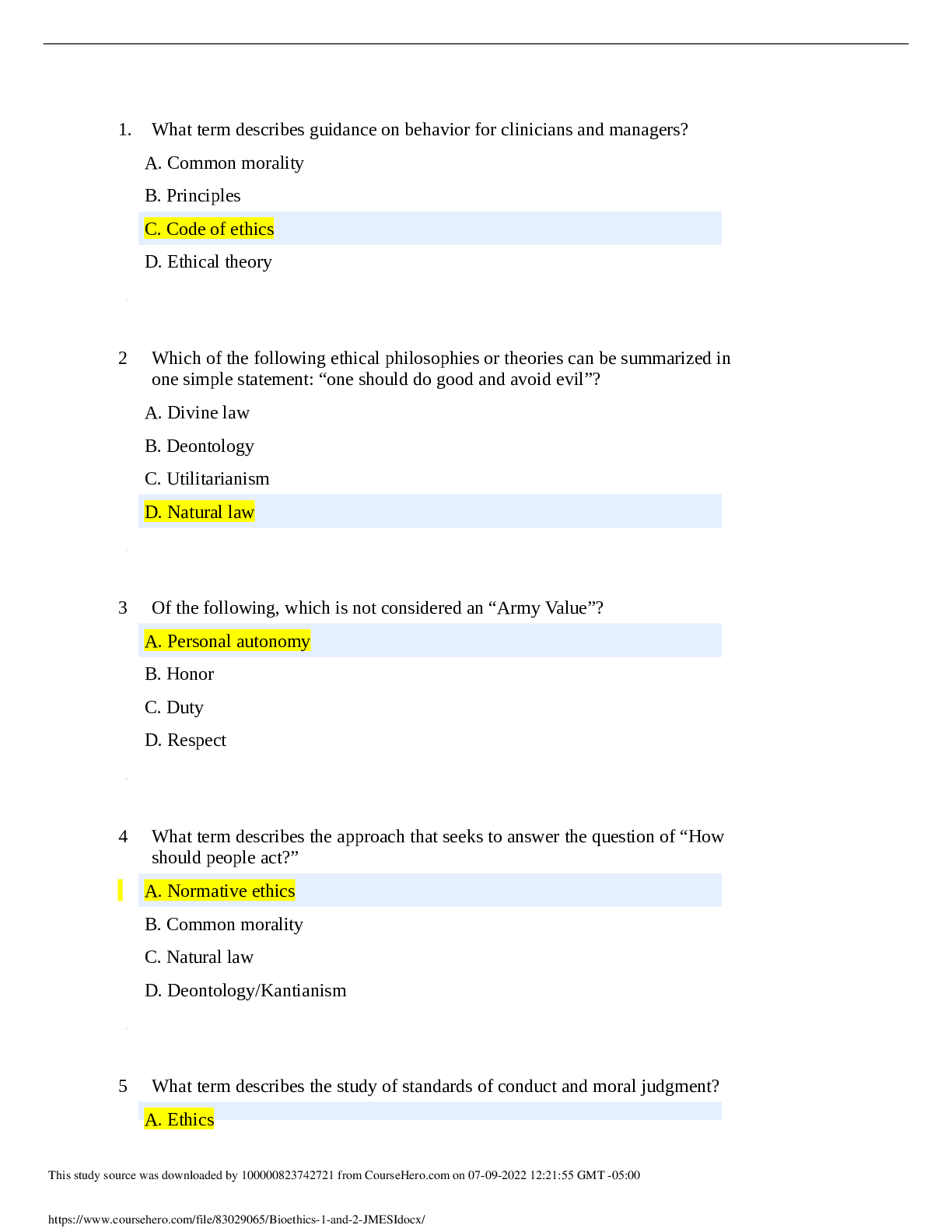
.png)
